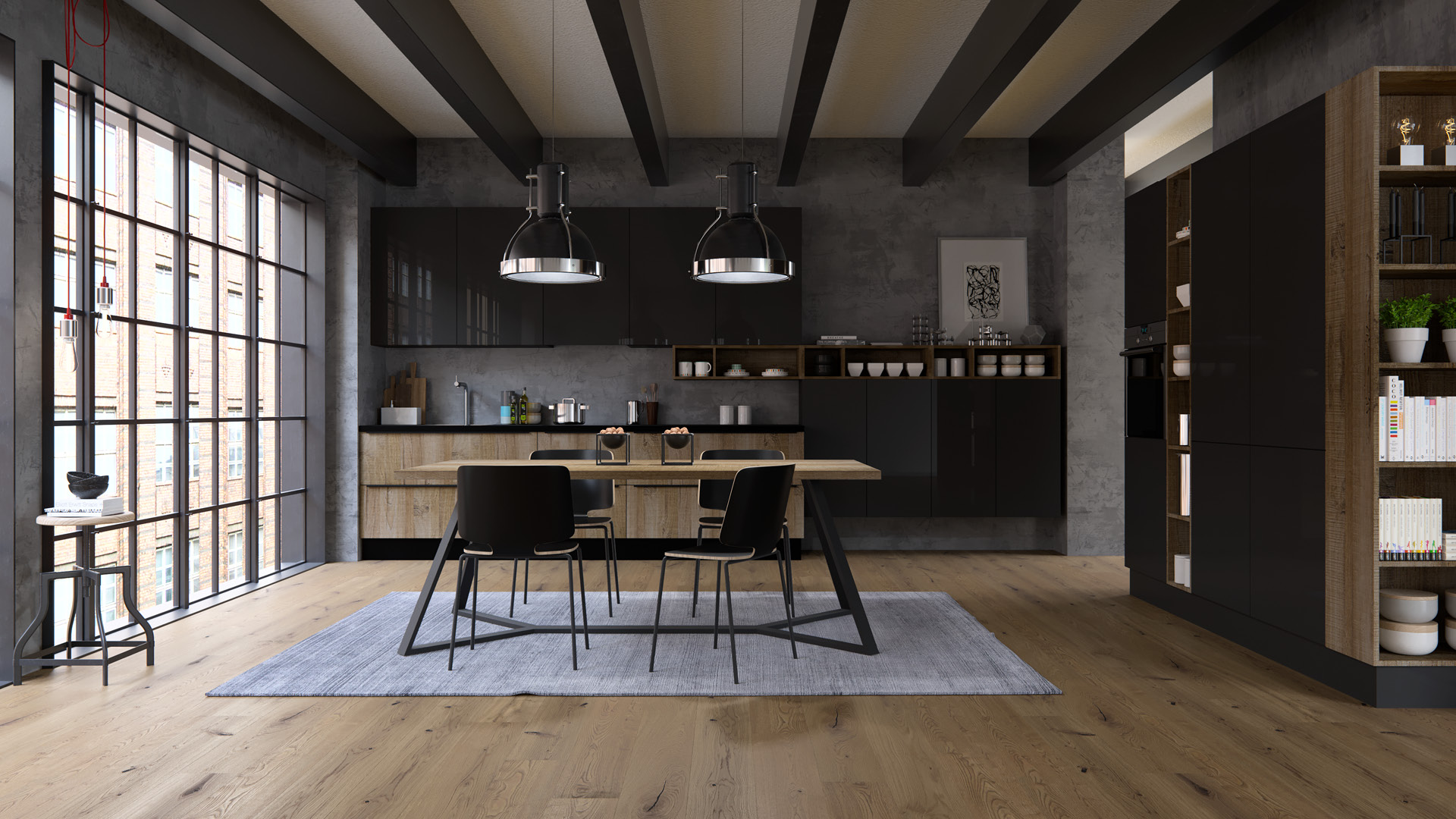Kitchen Ideas and Layouts that Combine Style and Practicality
The kitchen is more than just a cooking area. It’s the place where our daily routines begin, memories are made, and the most authentic moments are hosted. That’s why modern design emphasizes both aesthetics and functionality.
Today’s kitchen trends demand smart solutions that meet everyday needs without compromising personal style. From the right kitchen layout to the appropriate choice of materials and colors, every element plays a role in creating a space that is both beautiful and practical.
In this article, you’ll discover kitchen ideas, clever kitchen layouts, and ways to design your space so that it becomes both enjoyable and functional.
Kitchen Design Ideas with a Focus on Practicality
Smart Storage Solutions
Effective storage is a key component of a functional kitchen. With the right choices, you can organize your space without it feeling cluttered or chaotic.
Suggestions:
- Drawers with dividers for cutlery and utensils
- Internal mechanisms in corner cabinets like the magic corner
- Pull-out pantry systems
Functional Ergonomics
Ergonomics is the foundation of good design. An ergonomic kitchen facilitates smooth movement, reduces unnecessary steps, and enhances ease of use.
Key points:
- Work triangle: proper placement of sink, stove, and fridge
- Countertop height adjusted to the user
- At least 60 cm of free surface between stove and sink
- Soft-close hinges on cabinet doors and drawers
This way, your kitchen doesn’t just serve—it works for you.
H3: Appropriate Kitchen Lighting for Function and Atmosphere
Lighting is often underestimated, yet it can greatly affect both functionality and the atmosphere of your kitchen.
Recommendations:
- Task lighting: LED strips under cabinets
- General lighting: ceiling fixtures or track lighting with multiple bulbs
- Ambient lighting: indirect lights in shelves or inside cabinets
H2: Stylistic Approaches that Highlight the Space
H3: Modern Design with Clean Lines
Modern kitchens embrace clean geometry, neutral tones, and simplicity in design. A minimalist kitchen doesn’t mean a “plain space” but rather a refined aesthetic.
Style elements:
- Completely smooth surfaces (no handles or knobs)
- Uniform colors like white, charcoal, or beige
- Hidden appliances (e.g., built-in fridge)
Ideal for newly built homes or those who love a clean and tidy look.
Industrial Style with Character
If you prefer a more “crafted” or natural feel, rustic or industrial approaches add depth and texture to your kitchen.
Characteristics:
- Wooden cabinets with prominent grain
- Metallic surfaces (copper, iron)
- Open shelves and wall-mounted racks
Mixing Textures and Materials
A space gains personality when textures and materials are mixed. Kitchens with mixed materials are visually more engaging and typically more flexible in use.
Examples:
- Wooden cabinets with a marble countertop
- Matte cabinets paired with glossy wall tiles
- Cement surfaces combined with natural wood
How to Combine Beauty with Usefulness
Choosing Materials That Are Both Durable and Stylish
The quality of materials determines the lifespan of your kitchen. Ideally, you should choose materials that are both durable and aesthetically pleasing.
Suggestions:
- Compact countertops
- Glass cabinet fronts
- Anti-scratch finishes for matte kitchens
Decoration That Serves a Purpose
Decoration can also be a tool. You don’t have to fill the space with objects—choose decor with functional value.
Ideas:
- Herb jars that you use for cooking
- Chalkboard for recipes or shopping lists
- Wooden utensils on display as a design feature
Conclusions
Designing a kitchen requires balance. We want a space where everything has its place—but also one that inspires us daily and provides a pleasant user experience. A kitchen that balances style and practicality is not a luxury but a smart decision—based on your needs, habits, and personality.
Good design brings calm, supports movement, and creates an environment that works with you, not against you.
A well-designed kitchen can increase the value of your home, simplify your routine, and become a space of enjoyment and creativity. Even small interventions—like lighting upgrades or better storage organization—can make a big difference. For example, adding a multipurpose island or replacing cabinets with ergonomic systems can lead to immediate and meaningful transformation.
Never underestimate the effect that functionality has on how you experience your home. Your daily life becomes more efficient when your kitchen “responds” to your needs with smart solutions and quality materials.
Key takeaways:
- Every element should serve a purpose
- Details (lighting, storage, materials) make the difference
- Style should not come at the expense of ergonomics
- Quality design reflects in quality of life
Invest in solutions that last and highlight your space’s character. A well-designed kitchen isn’t just beautiful—it’s a life tool.
CENTRO Tip
The CENTRO team designs kitchens tailored to your needs, offering innovative solutions, style, ergonomics, and smart use of space. Visit a CENTRO showroom and discover how your space can be transformed.
